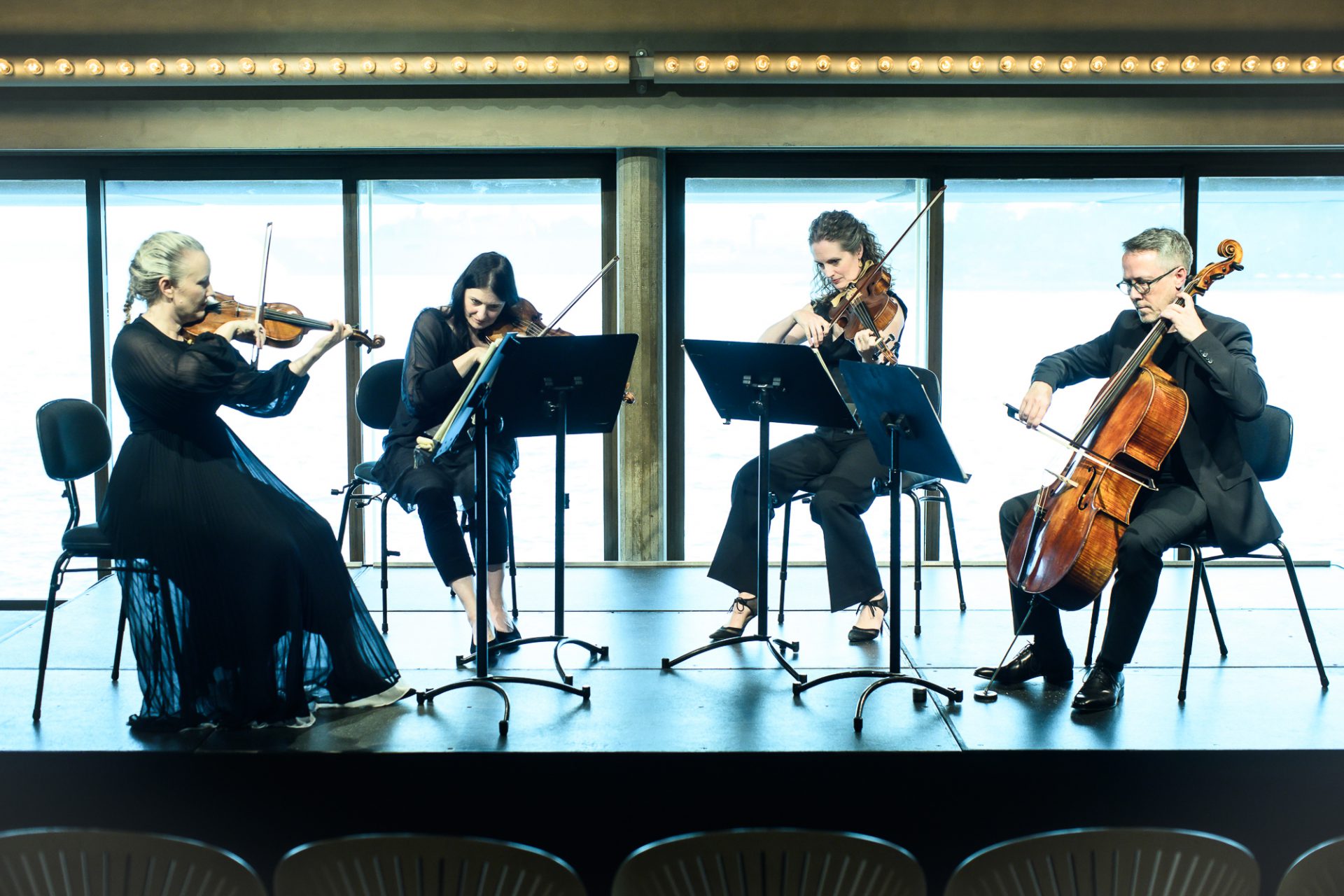In true Australian Haydn Ensemble style, this concert was a celebration of the trinity of the string quartet composers – Haydn, Mozart and Mendelssohn.
The opening Haydn’s String Quartet Op. 20 No. 4 in D major smiles upon its audience. It was a perfectly fitting coincidence that the publisher of the Op. 20 score had sketched on the cover the image of a smiling sun rising amid a Classical scene of urns and lyres. Hence the ‘Sun Quartets’. But any hint of light-heartedness is dispelled by a fierce cascading passage, executed with great effect by Skye McIntosh on violin in a way that demands attention, which descended like a thunderbolt upon the unsuspecting audience. Then followed virtuosic running passages by McIntosh, interspersed with fleeting but highly expressive responses by Daniel Yeadon on cello.
Yeadon shone in the un poco adagio e affettuoso, which featured something of a cello ‘aria’. That movement features a heart-rending ascending dialogue between McIntosh (whose performance here was delightfully silvery) and Yeadon. The style smacked of the Romantic era. One senses throughout the force of Sturm und Drang, and the last breaths of the stil galant.
Most pieces falling in the generic bin of ‘divertimenti’ are perfectly genial, but not entirely memorable. Not so Mozart’s String Quartet No. 15 in D minor K. 421. It is replete with florid melodic gestures. The opening is brooding but strangely song-like. Every bit of lyricism was breathed into the bare score by McIntosh. Mozart makes his distinctive self known a few minutes into the first movement with a whimsical series of repeated notes, before it descends again into minor mode.
The motif appears again in the Menuetto, but ever so slightly. Sticking with the impression given by the first movement, the Menuetto is unrelentingly dramatic. Change sin dynamics are negotiated deftly by Alice Evans on violin and Karina Schmitz on viola, who later switch to pizzicato in what again resembles a lyrical aria for McIntosh on violin. The final movement is more stately, and the repeated-note motif appears in a transfigured form – as something of a trumpet-call, which is passed to each member of the quartet, in sequence.
The concert closed with Mendelssohn’s String Quartet Op. 12 No. 1 in E flat major. The overall theme of the first movement is nostalgia, or longing. There are many expressive, upward-reaching passages for violin. It soon becomes tempestuous as Schmitz performs a wavering accompanying passage that increases gradually in force. Mendelssohn styles his second movement as a ‘canzonetta’. As is well known, here is the sign of a composer who first looks back to forge a musical future. It is a charming folkish piece, with pizzicato and staccato bowing abound. The best part is when Schmitz and Yeadon perform an unrelenting staccato passage in unison, with long bows on violins, which all gave the impression of urgency.
